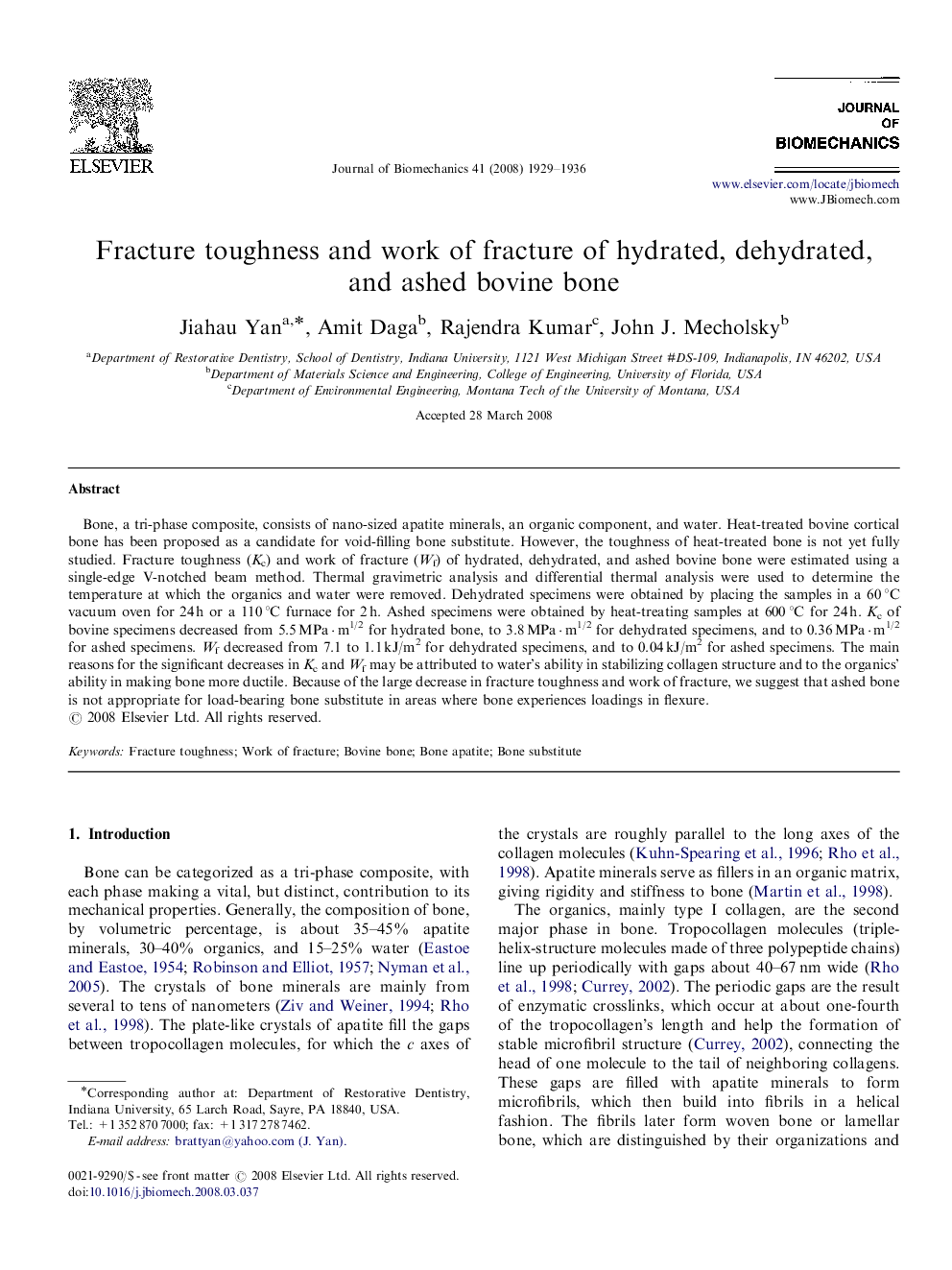| Article ID | Journal | Published Year | Pages | File Type |
|---|---|---|---|---|
| 875165 | Journal of Biomechanics | 2008 | 8 Pages |
Bone, a tri-phase composite, consists of nano-sized apatite minerals, an organic component, and water. Heat-treated bovine cortical bone has been proposed as a candidate for void-filling bone substitute. However, the toughness of heat-treated bone is not yet fully studied. Fracture toughness (Kc) and work of fracture (Wf) of hydrated, dehydrated, and ashed bovine bone were estimated using a single-edge V-notched beam method. Thermal gravimetric analysis and differential thermal analysis were used to determine the temperature at which the organics and water were removed. Dehydrated specimens were obtained by placing the samples in a 60 °C vacuum oven for 24 h or a 110 °C furnace for 2 h. Ashed specimens were obtained by heat-treating samples at 600 °C for 24 h. Kc of bovine specimens decreased from 5.5 MPa·m1/2 for hydrated bone, to 3.8 MPa·m1/2 for dehydrated specimens, and to 0.36 MPa·m1/2 for ashed specimens. Wf decreased from 7.1 to 1.1 kJ/m2 for dehydrated specimens, and to 0.04 kJ/m2 for ashed specimens. The main reasons for the significant decreases in Kc and Wf may be attributed to water's ability in stabilizing collagen structure and to the organics’ ability in making bone more ductile. Because of the large decrease in fracture toughness and work of fracture, we suggest that ashed bone is not appropriate for load-bearing bone substitute in areas where bone experiences loadings in flexure.
